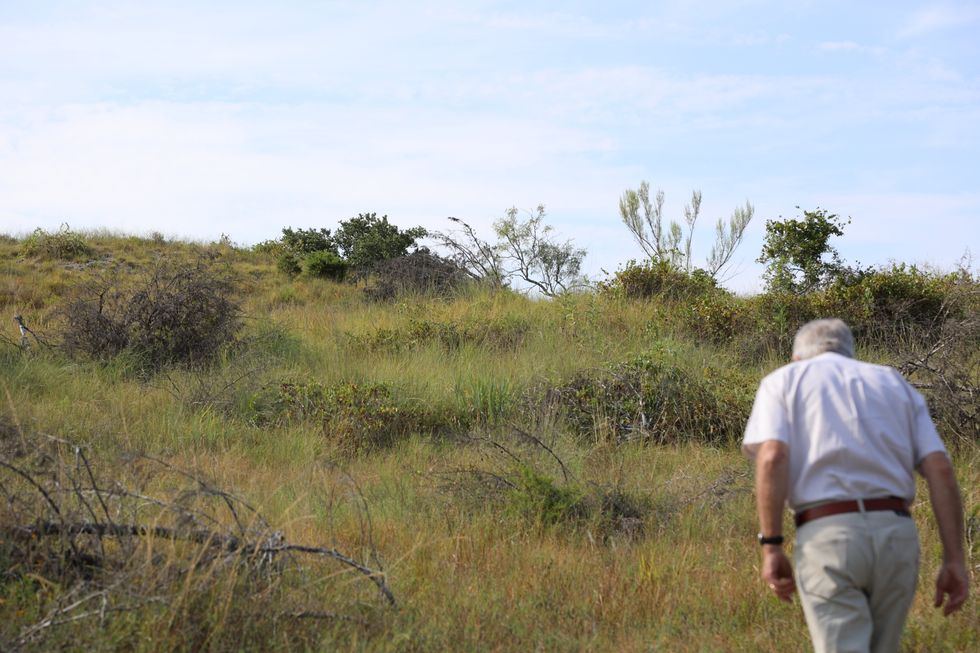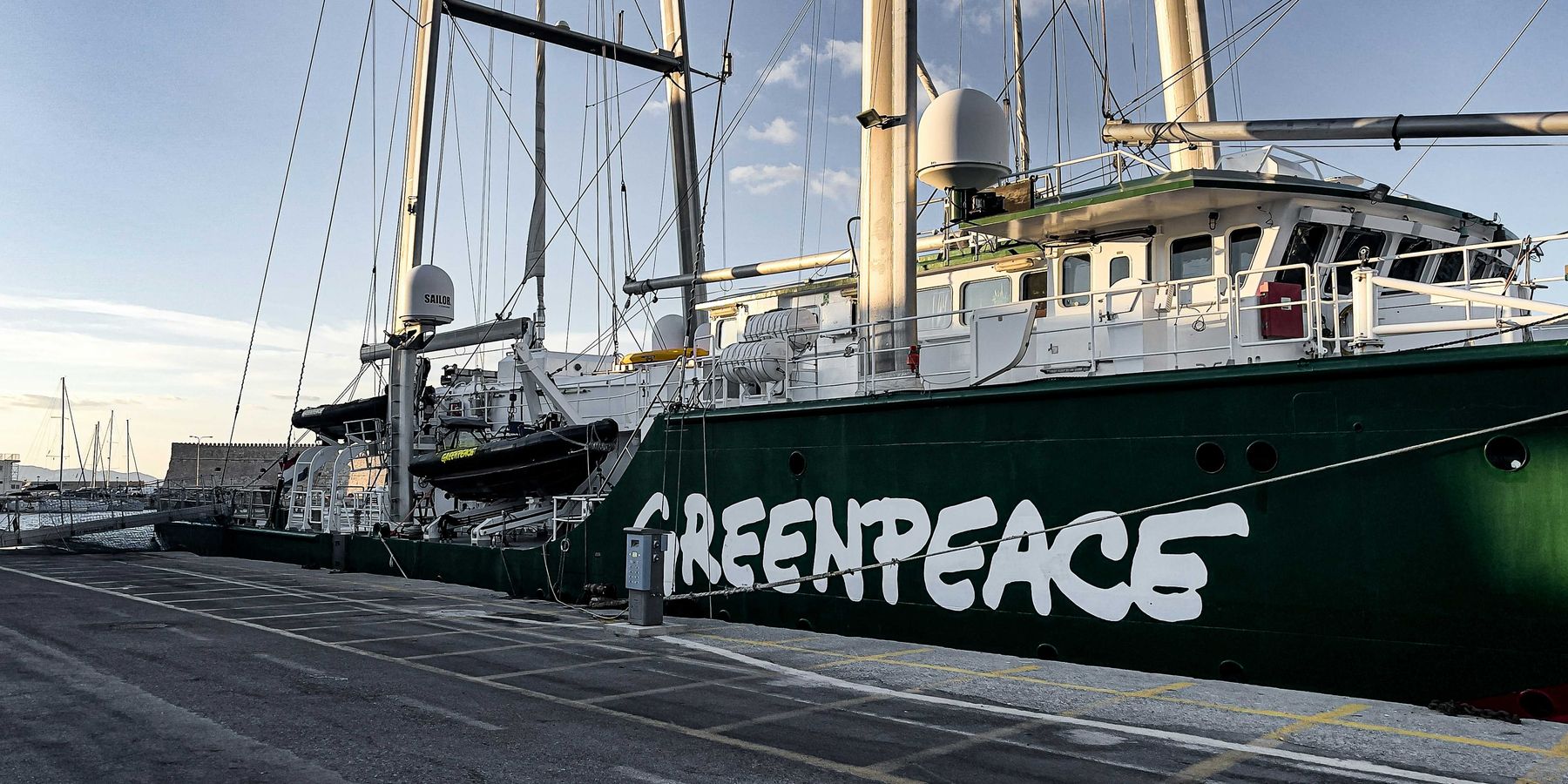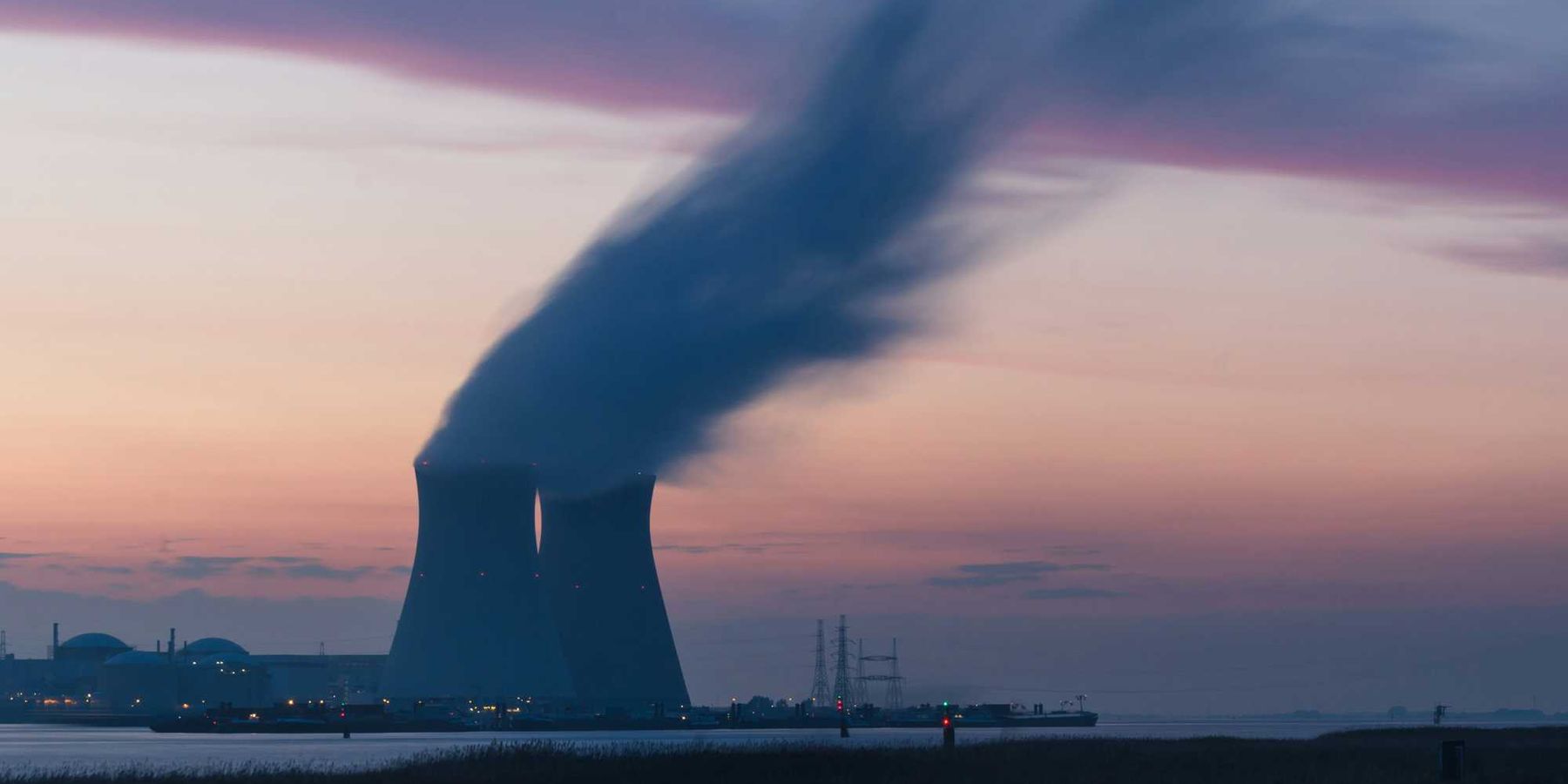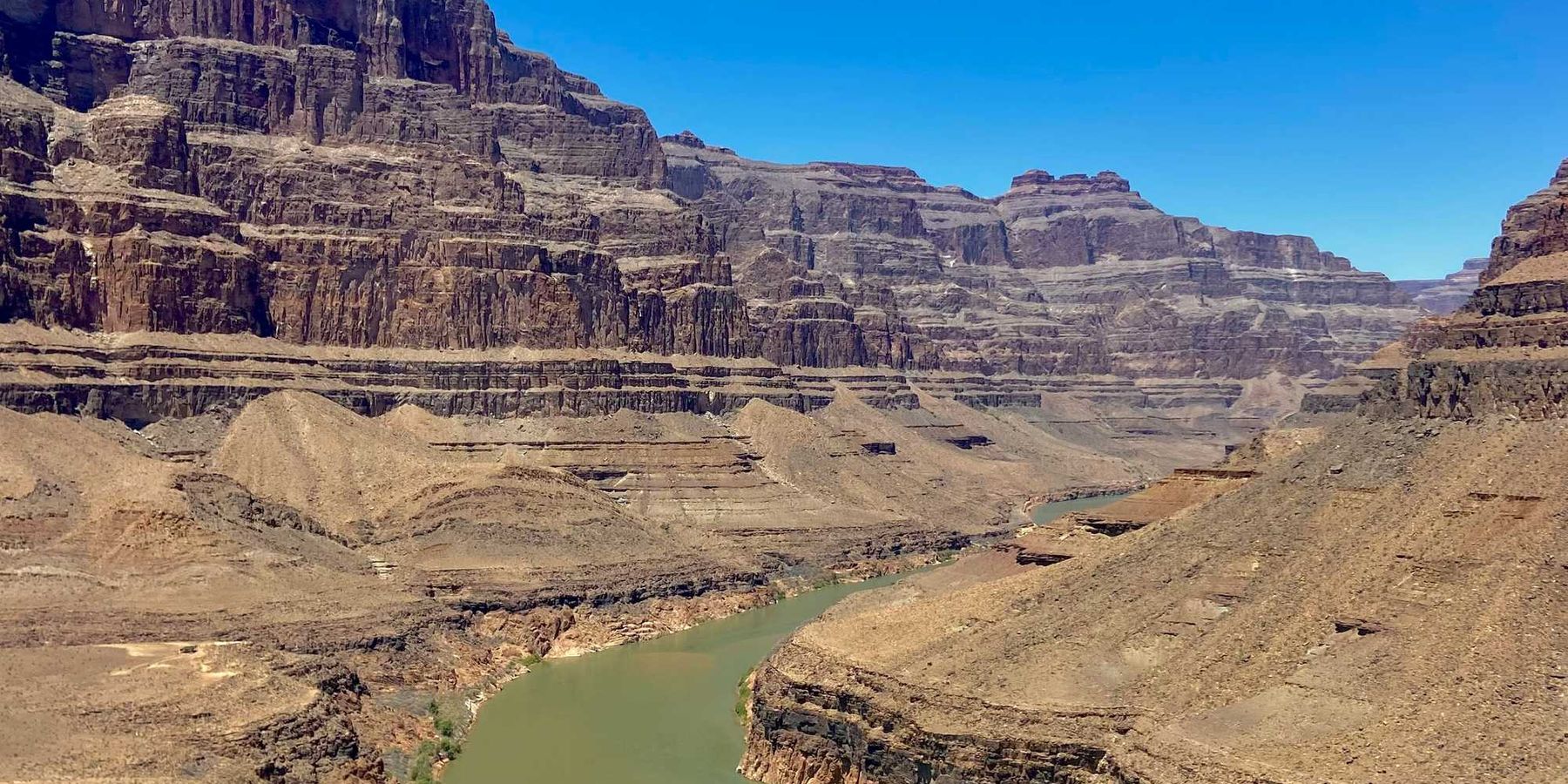
The battle over pipelines, population and property rights in Texas’ Hill Country
"Texas claims to be very sympathetic to property rights. On the other hand, they support oil and gas. What this project has exposed is that these two priorities are not equal."
GILLESPIE COUNTY, Texas—On a mid-morning in August, Andy Samson plods up a steep hill, wading through thigh-high grass.
We stop at the top, a perfect vantage point of Hershey Ranch. Below us, a white-tailed deer bounces between hedges.
The landscape looks pristine. Oaks and cedars speckle the hillside green and golden-brown. But Samson sees signs of damage from historical overgrazing: there are not enough mature cedars to attract the golden-cheeked warbler, an endemic species in Hill Country, a region named for its steep, craggy hills.
Samson points to a power line strung across the hillside, where he conducted a controlled burn to promote the growth of native grasses. On that day, a 6,000-foot plume of smoke loomed over the countryside and spooked his neighbors. But Samson is happy with the result. "The grass is much thicker and richer," he told EHN, sounding like a proud parent.
Hershey Ranch covers 1,565 acres and is the largest protected property in Gillespie County, located west of Austin and in the heart of Hill Country. Samson and his wife, Nona—both in their seventies—split their days between Austin and the ranch, where they have devoted much of their time since 2011 when Andy Samson inherited the property as a life estate. They work on restoring the native habitat at least five hours a day, three or four days a week. Samson wishes he could put in longer hours, but Texas heat is a limiting factor.
The Samsons spent years stewarding and restoring their land. But this month, Hershey Ranch could face an upheaval: bulldozers would clear a 150-feet-wide path, ripping out trees to make room for a 42-inch natural gas pipeline.
It started a year ago, in October, when the couple received a letter from Kinder Morgan, one of the largest oil and gas infrastructure companies in the United States. The two-page memo dropped a bombshell: the company planned to build a 432-mile pipeline, stretching all the way from the Permian Basin in West Texas to the Gulf Coast. The pipe would cut straight across Hill Country, Hershey Ranch included. It would snake under rivers and highways, cut across ranches, and burrow near houses and future developments.

The Samsons are among roughly 30,000 landowners within three miles of the proposed route. In the letter, Kinder Morgan asked landowners for permission to set foot on their property to survey the land. But the company didn't need permission: they needed to submit a four page application to the Texas Railroad Commission (RRC), who would then grant them the power of eminent domain.
The power of eminent domain dates back to building railroads, which were deemed crucial for public benefit. So, in a state where private property rights are a source of great pride, Kinder Morgan could install the pipeline where they pleased, as long as they paid landowners. For landowners who failed to respond or cooperate, Kinder Morgan followed up with letters of condemnation, meaning they would take the land without the landowners' permission.
As Kinder Morgan gears up for construction in Hill Country, communities across Texas—expressing concerns over safety, environmental destruction and landowners' rights—are staging battles to oppose the route.
In Texas, where oil and gas fuels the economy, this is a new kind of fight. Between 2010 and 2018, the state grew from 25 million to nearly 29 million residents. The area surrounding Austin, including Travis and Hays County, has been the fastest-growing metro area in the nation for the last eight years. Residents of Hill Country see this moment as an inflection point—with a growing population, oil and gas interests are becoming more at odds with landowner rights. Opponents of the Permian Highway Pipeline hope to set a precedent, shifting power away from Kinder Morgan before other energy infrastructure companies follow them to the Hill Country.
The scale of this fight is unprecedented—and so is its power to unify. The landowners, local governments, and advocacy groups cover a vast spectrum of attitudes and political identities. Some are environmentalists, while others are pro-development. "But in this case we're all aligned with a common enemy," Travis Mitchell, the mayor of Kyle, told EHN. "Having a common enemy has a uniting effect."
"It created a strange set of bedfellows."
“An allegory for why protecting property is so important”
Hershey Ranch looks untouched, but with one exception. Samson points to a historic right of way, which cuts straight across a hill. Between 1928 and 2011, a much smaller pipeline, one used to transport crude oil, ran through this passage.
"It's an allegory for why protecting property like [Hershey Ranch] is so important," Samson said.
"Twenty years ago, you could have crossed 35 in a lot of places. It's a lot harder right now and it's going to get harder and harder as people move to Texas," Lon Shell, the Hays County Commissioner, told EHN, referring to Highway 35.
But today, "It's hard to get across the state of Texas without going through some fairly populated areas."
To install the Permian Highway Pipeline, Kinder Morgan would need to widen the right of way to 150 feet. Samson says he was shocked to learn how easy it was for them to get approval.
As a first step, Kinder Morgan needed a permit from the Army Corps of Engineers. The Army Corps streamlines the permitting process for projects they see as routine, including pipelines. To be eligible, a company must claim to have a minimal impact on the environment. Typically, a company submits its plans for installation and includes a list of endangered species living in the area.
Most importantly, the Army Corps only looks at waterways, where the pipeline would cross a creek or other body of water.
"In terms of a rough estimate, that only covers 2 to 3 percent of the entire length of the pipeline at most," David Smith, an attorney representing an earlier lawsuit against Kinder Morgan, told EHN. "The Corps puts on blinders…they say, from a regulatory standpoint, 'we're not going to look at the entire 400 to 500 miles of pipeline.'"
Smith represented Hays County, along with citizens and conservation groups, in a lawsuit filed in July against Kinder Morgan, the U.S. Fish and Wildlife Service, and the U.S. Army Corps of Engineers. The lawsuit would have required Kinder Morgan to also apply for an incidental take permit through the U.S. Fish and Wildlife Service— instead of only going to the Army Corps as part of a streamlined process.
The permit would cover harm to endangered species, including the golden-cheeked warblers. To receive the permit, Kinder Morgan would face scrutiny for the entire length of the pipeline, not just the 2 to 3 percent crossing water. Currently, the lawsuit is in limbo; it will continue if Kinder Morgan forgoes applying for a separate permit through the U.S. Fish and Wildlife Service.
It isn't the first lawsuit: In April, a coalition of landowners, along with Hays County and the City of Kyle, filed a lawsuit against Kinder Morgan and the Texas Railroad Commission (RRC), challenging the way that RRC grants eminent domain. In the lawsuit, plaintiffs argued that the process of granting eminent domain was unconstitutional— it lacked safeguards and standards that the constitution required. Judge Lora Livingston, however, ruled in favor of Kinder Morgan.
"As noted by previous courts, Texas's eminent-domain laws are longstanding," Livingston wrote in a letter explaining her decision.
“Creating pathways for contaminants”
Opponents aren't just concerned with the overwhelming authority granted to pipeline companies; they also question the environmental impact of a natural gas pipeline running through Hill Country.
Beneath the oak trees and grasses, a network of caves and porous crannies run below the surface of the earth. This invisible landscape is called karst, and it forms when soluble rocks dissolve over long periods of time.
In August, Watershed Protection Department and Environmental Officer Chris Herrington published a report looking at potential impacts on water quality. The report's conclusion was clear: it is "highly likely" that the pipeline will cross over underground karst features, "potentially altering flow pathways within the aquifers and creating pathways for contaminants to spread along underground conduits."
A pipeline transporting natural gas can collect condensation, which would become a liquid contaminant in the event of a leak. "Accidental release of hydrocarbon liquids to surface water or groundwater could occur," Herrington writes. Without more analysis, it would be impossible to know which chemicals would condense, and at what concentrations. But in general, liquid hydrocarbons pose a threat to both wildlife and human health.
With a pipeline leak, "contaminants will move into the ground," George Veni, executive director of the National Cave and Karst Research Institute, told EHN. "Some contaminants might show up in your drinking water literally in a matter of hours, before anyone is aware that a spill or leak has happened. Other parts of the system might not show up for years or decades."
Realistically, Veni notes, it would be difficult for the pipeline to avoid karst features altogether. The Edwards Plateau is vast, covering more than 37,000 square miles in the center of Texas. If Kinder Morgan went south, they would be in Mexico. Rerouting the pipeline north would add many more miles to the pipe.
David Harro, an outside expert who specializes in investigating sinkholes and other karst features in Florida, thinks optimistically about gas pipelines and the available technological precautions. "Pipeline companies usually do a pretty good job in monitoring these things," Harro told EHN. "Pipeline companies really don't want a failure. It's very expensive for them."
"For the most part, a thorough investigation of the area is really one of the key factors they have to rely on," he said.
Water quality is not the only concern; the project could also have a negative impact on wildlife in the system. Several salamander species, including the federally protected Barton Springs salamander and Texas Blind salamander, occupy waters downstream of the proposed pipeline. Others include the Coral Springs dryopid beetle, the Coral Springs riffle beetle, and the Fountain darter, a minuscule freshwater fish. They are species known for thriving in clear, well-oxygenated water. Advocates fear that any contamination from the pipeline will shrink their amount of viable habitat, putting them at risk for extinction.
In October, the cities of Austin, San Marcos and Kyle, along with the Wimberley Valley Watershed Association and Barton Springs Edwards Aquifer Conservation District, filed a notice of intent to sue the Army Corps and U.S. Fish and Wildlife, citing concerns over endangered species in the aquifer. Before filing the lawsuit, they must wait 60 days for the two government agencies to respond.
Kinder Morgan is planning to install sections of the pipeline in Hill Country as early as this month. By the time the lawsuit enters a courtroom, the pipeline could already be in the ground.
In an op-ed for the Austin-American Statesman, Allen Fore, Kinder Morgan's vice president of public relations, wrote that the company is "working with a karst expert to mitigate potential subsurface impacts."
"This route is based on detailed professional field surveys, desktop studies and literature and databases that locate sensitive features."
EHN called Kinder Morgan three times; the company would not make anyone available for an interview.
"I think we're throwing spaghetti at the wall to see if it sticks, to be honest," Mitchell, the mayor of the City of Kyle, said.
Oak wilt and explosions

Lucy Johnson at her Halifax Ranch. (Credit: Madeleine Turner)
Fifty-five miles to the southeast of Samsons' property, I met Lucy Johnson on an early Monday morning at Halifax Ranch, which stretches more than 3,800 acres and is owned by Johnson's father and his two sisters. Johnson, a former mayor of the nearby city of Kyle, lives in San Marcos but visits the property two or three times a week.
Johnson's Jeep lurches over uneven terrain and winds between thick, low-hanging cedars and oaks. It's ideal habitat for golden-cheeked warblers, a bird Johnson hears but rarely sees. We stir up dust and the air is thick with pollen.
After 10 minutes of bobbing over uneven ground, we reach a circular clearing. A constellation of white and yellow wildflowers, leftovers from spring, sway in the breeze. We hear cars passing on highway 150 and the sound of grasshoppers whizzing past our shins.
"[Oaks] are very slow to grow, but they're very important for the soil," Johnson told EHN. "They keep it from eroding. They're part of what makes the Hill Country so beautiful to live in."
This clearing is technically a wetland; in rainy months, water saturates the soil and causes it to expand.
Johnson motions across the clearing. A circular, dark pond sparkles in the morning light. We see a flash of movement: a wild hog, about the size of a Labrador retriever, scoots through the vegetation. Johnson spots a couple more trailing behind and guesses they are the hog's babies. A host of wildlife use the pond as a watering hole.

Lucy Johnson (Credit: Madeleine Turner)
According to Kinder Morgan's plan, the pipeline will run straight through this clearing. To make way for the pipe, Kinder Morgan would uproot old-growth oak trees and fill in the pond. Uprooted trees would spread oak wilt, a pernicious disease that weakens and eventually kills oaks after many years. "It's like if you had the flu for a decade and [it] was always contagious," Johnson said.
We drive past the ranch house. The Jeep rumbles over the top of a hill, which gives way to a ravine that descends to the Blanco River. The water is turquoise, a byproduct of an algae that thrives in the summer. Enormous cypress trees loom over the river.
Johnson motions to the slope we just came down. The pipeline would run within 400 yards from the river. "That's within the blast zone," she said. Johnson and other residents of Hays County are fearful of the pipeline exploding. In the United States and around the world, natural gas pipeline explosions are not unprecedented.
Between 1994 and 2013, problems with gas transmissions caused 41 deaths and more than $400 million worth of property damage in the United States. In 2000, a 30-inch natural gas pipeline in El Paso, Texas, exploded, killing 12 campers sleeping about 600 feet away. Residents in Carlsbad, New Mexico, saw the fireball looming 20 miles away, and the explosion left a crater 86 feet long and 20 feet deep. Ten years later, another 30-inch natural gas line exploded in San Bruno, California. The blast killed 8 people, and witnesses saw a "wall of fire more than 1,000 feet high."
The most recent major explosion happened in August, when a natural gas pipeline erupted in Lincoln County, Kentucky, killing one person and injuring five others. Flames billowed 300 feet high and melted a nearby railroad track.
"If anything happens here, it will ruin what we've tried for generations to preserve," Johnson said.
“They’re coming very nearly through the center of the city.”
Four miles down the road from Halifax Ranch, visitors find themselves at the center of the City of Kyle. Home to more than 40,000 people, Kyle is one of the fastest growing cities in Texas.
City leaders first heard about Kinder Morgan's plans through a local newspaper. At the first meeting with the company, Mayor Mitchell recalls Kinder Morgan presenting outdated maps, which showed the pipeline running next to, but not through, the city's boundaries.
But in 2015, the city had annexed more land. Over several years, the city slated three tracts of land—the Blanco River, and the Nance and McCoy tracts—for development. Combined, they would create 19,000 living units—mainly residential neighborhoods, with some plans for commercial developments, too. Owners of the three tracks had already submitted plans for development and received approval to build.
"The maps they presented showed all ag land. We were like, 'no, this is not ag land,'" Mitchell said. "Not only are they coming through the city of Kyle, they're coming very nearly through the center of the city."
In particular, the pipeline would disrupt plans to build on the Nance Tract. Multiple owners of the Nance Tract originally planned to develop their land in phases: first, they would build houses on a small portion of the property that abuts old city limits. Property tax from those homes would pay for a bridge crossing the Blanco River. Only then could the rest of the property be developed. But, critically, the pipeline would cut straight through the first section, making it impossible for the developers to get past the first phase.
"It makes the entire piece of property worth only as much as they can get for somebody who wants to own ranch land," Mitchell said.
The City of Kyle also planned to extend a major highway, which, for now, runs through the center of the city, causing traffic. "This 150 Highway, this has been in the works for years," Mitchell said. After many town halls, the city is conducting an environmental impact study for the highway, which would loop around to the west of Kyle. "It's not in the ground yet because we're going through all these steps, in order to engage the public and follow regulations. We're not even using eminent domain for it," Mitchell said.
"Even without eminent domain, we have to follow a more stringent public process than what [Kinder Morgan] is doing, coming in and condemning land," he said.
If both the pipeline and the new highway existed, they would intersect five times. If the pipeline goes in the ground first, Kyle would need to find a new route for the highway.
"The lack of communication with local and county governments is creating a lot of conflict and a lot of problems," attorney David Smith told EHN. "It's illustrative of what happens when you try to do something fast, cheap and behind closed doors."
On July 2nd, the city of Kyle passed an ordinance that would have regulated the pipeline installation. The ordinance required Kinder Morgan to bury the pipe 13 feet in the ground, instead of only 3 feet. The company would also pay a fee to the city. In response, Kinder Morgan sued the city. If a judge granted Kinder Morgan a temporary injunction to throw out the ordinance, the company would have been able to install the pipeline even before the lawsuit was resolved.
Instead, the city of Kyle settled with Kinder Morgan in October, with some small wins for Kyle. Thanks to the $2.7 million settlement, Kinder Morgan is not allowed to convert the pipeline from natural gas to crude oil. They must construct the pipeline at least 200 feet away from any developments within city lines. In certain areas, the company will be required to bury the pipeline 8 feet deep, to avoid interfering with other projects.
"I think the settlement agreement was the best of all possible outcomes," Mitchell said. "It creates some wins for the city we weren't going to get otherwise." When Mitchell talks about the settlement, he uses the word "strategic." Kinder Morgan is exempt from the city ordinance, but that ordinance is still intact. "A new pipeline company would have to submit to the ordinance or sue us," he said.
"It's an incredible paradox, a contradiction of values. On one hand the state of Texas claims to be very sympathetic to property rights. On the other hand, they support oil and gas. What this project has exposed is that these two priorities are not equal."
“That’s the law in Texas, you can do this if you want”
In 2018, Texas legislators pushed several bills to reform eminent domain. Although those efforts stalled, opponents of the Permian pipeline look to the 2020 legislative session with hope. Although it seems unlikely the Permian pipeline will be stopped, the movement opposing it has gathered momentum. In October, Kinder Morgan announced it would be pushing back its timelines and doesn't foresee the pipeline being in operation until 2021.
Still, for landowners directly affected by the project, the outlook is grim.
Back at Halifax Ranch, Johnson and I stand on a wooden deck perched at a high point above the vast turquoise river. Instead of skirting around, Kinder Morgan would drill under the Blanco River multiple times.
"They want to say they have the shortest route from the Houston area to the Permian Basin," Johnson said. "And they have the funds and wherewithal to do it."
"That's the law in Texas, you can do this if you want."













